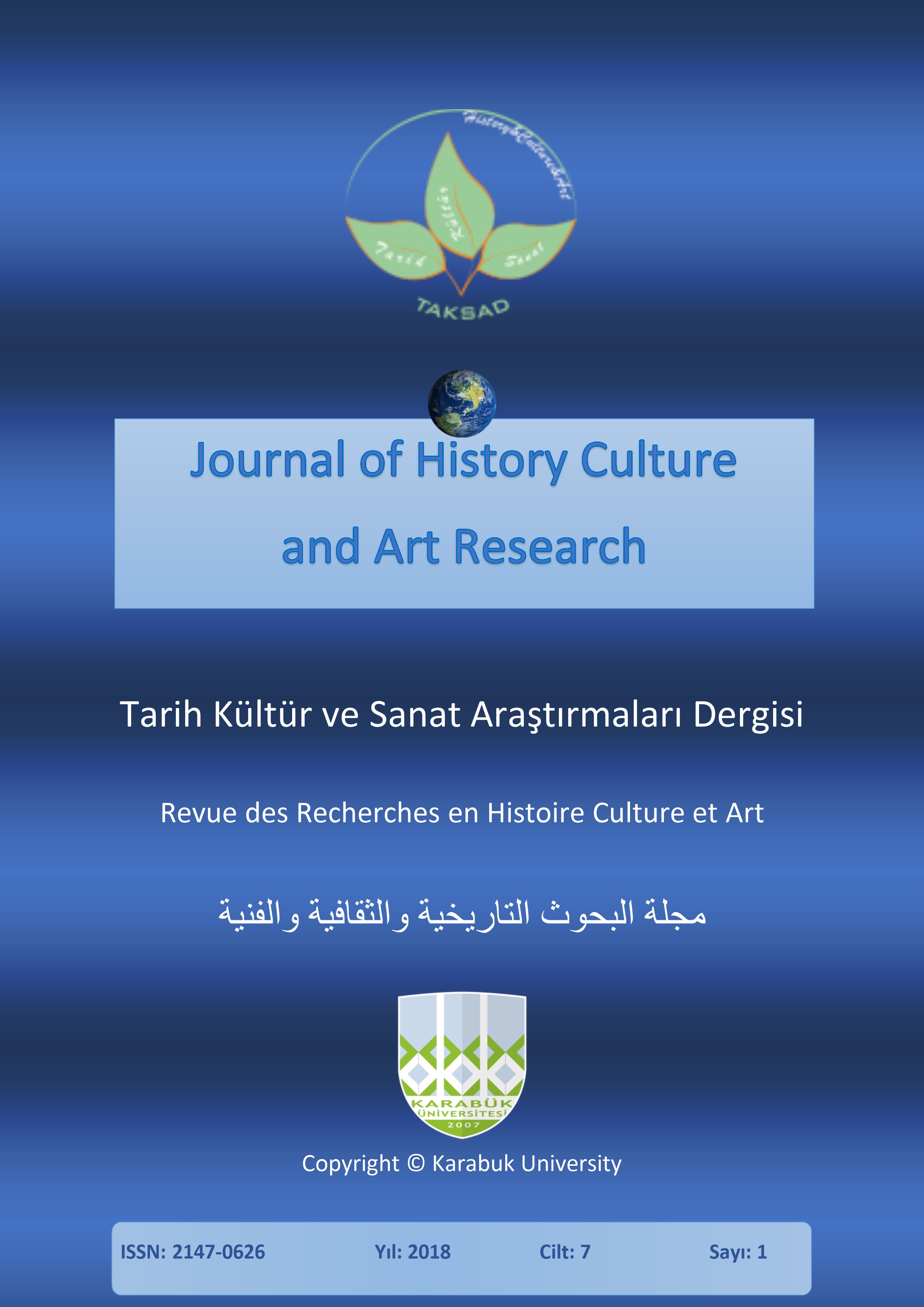Rewriting of the History and Rebuilding of Geography of Iran's Handmade Carpet in the First Centuries A.H.
DOI:
https://doi.org/10.7596/taksad.v7i1.1446Keywords:
Handmade carpet, Written references, History, Production centers, Iranian carpet.Abstract
With regard to type of raw materials in use, impermanency of handmade carpet incurs the most damage on its historical studies body. The expanse of this damage is to an extent that has made almost empty from civilization works the history of carpet in the first century in the Islamic Iran. Rewriting of the history and geography of Iran's handmade carpet in the first five centuries, according to the written references, is among the aims of this research. In this research, it was found that the indirect written references would have the ability to extract the acceptable information on handmade carpet. Therefore, types of common words related to the handmade carpet were extracted from the above references. In terms of the words frequency; straw-like mat, Kilim (or rug), carpet and prayer mat, allocate respectively the most frequency to themselves. Moreover, the major production centers were distinguished in Fars, Tabarestan and Deylaman, Greater Khorasan, Khuzestan and Azerbaijan that among them, Khorasan, Fars, Tabarestan, respectively, have had the most frequency in the productions volume.
References
Al-Masudi, Abu al-Hasan Ali ibn al-Husayn (1982). Muruj adh-Dhahab wa Ma'adin al-Jawhar, translated by Abolqasem Payandeh. Tehran.
Al-Muqaddasi, Abu Abdullah Mohammad ibn Ahmad (1983). Ahsan al-Taqasim Fi Marifat al-Aqalim, translated by Ali Naqi Monzavi. Tehran.
Azarpad, Hassan & Heshmati, Fazlollah (2005). Iran's carpet-literature. Tehran: Research-institute of human sciences and cultural studies.
Bayhaqi, Abul-fadl (1978). Bayhaqi history, corrected by Ali Akbar Fayyaz. Mashhad: Ferdowsi University.
Bukhari, Mohammad (1994). Favayed al Khotut, book-designing in Islamic civilization, with effort of Mayel Heravi, Najib. Mashhad: Islamic researches foundation of Astan Quds.
Daneshgar, Ahmad, Zh. (1998). Comprehensive dictionary of Yadvareh' carpet (Iran's encyclopedia). Bija: Yadvareh Asadi Publication.
Dehkhoda, Ali Akbar (1999). Dehkhoda dictionary. Tehran: Tehran University Publications.
Gardezi, Abdul-Hay (1985). Zayn al-Akbar (Gardezi's history), studied by Abdul-Hay Habibi. Tehran: Donya ye Ketab.
Hangoldman, Armen (1997). Iranian rugs, translated by Asghar Karimi. Tehran.
Heshmati Razavi, Fozlollah (2009). Iran's carpet history. Tehran: Samt publication.
Hosouri, Ali (1997). Carpet on miniature, Giti, Farhad, Sistan's carpet cultures.
Hosouri, Ali (1997). The word of rug. The collection of lectures in the fifth international conference on Iran's carpet. The center for Iran's exports development. Tehran.
Hudud al-Alam min al-Mashriq ila l-Maghrib, (unknown writer), with effort of Sotodeh, Manouchehr (1984). Tehran: Tahouri publication.
Ibn Balkhi (1935). Fars-Nama, with effort of Jalal ad-Din Tehrani. Tehran: Mehr e Tehran.
Ibn Hawqal, Abolqasem (1967). Surt-alardh, translated by Jafar Shoar. Tehran: Iran's culture foundation.
Ibn Khordadbeh, UbaydAllah (1992). A-Masalik wal-Mamalik, translated by Hossein Qara Chanlu. Tehran: Maharat Printing.
Istakhri, Abu Ishaq Ibrahim (1990). Al-Masalik wal-Mamalik, with effort of Iraj Afshar. Tehran: Tehran's scientific and cultural publications.
Jahanbakhsh & Roshani (2017). Study of Iran's textile industry in 4th and 5th centuries A.H. Social and economic research literature, research-institute of human sciences and cultural studies, 5(2), autumn and winter.
Le Strange, Guy (1944). Lands of the eastern caliphate, translated by Mahmoud Erfan. Tehran.
Malaie Tavana, Alireza (2008). A prelude on research methodologies in history. Tehran: Ney Publications.
Mosaheb, Gholamhossein (1967). Persian encyclopedia. Tehran: Amir Kabir.
Narshakhi, Abubakr Mohammad ibn Jafar (1973). History of Bukhara, translated by Abu Nasr Ahmad ibn Mohammad Ghabavi. Tehran: Iran's culture foundation.
Parham, Sirus (1993). Knot-woven carpets in Persian texts in the Islamic first centuries. Nashredanesh magazine, Mordad and Shahrivar, 71.
Parham, Sirus (1993). Tribal and rural hand-woven things in Fars. Tehran: Amir Kabir.
Pope, Arthur & Ackerman, Phillips (2010). A review on Iran's art, translation with supervision of Sirus Parham. Tehran: Scientific and cultural publications.
Ravandi, Mohammad ibn Ali (2007). Rahat al-Sudur wa-ayat al-Surur, with effort and correction of Mohammad Iqbal. Tehran: Asatir publication.
Razavi, Fazlollah Heshmati (2014). Iran's carpet, organization of study and compilation of human sciences books of universities. Tehran: Samt publication.
Roxburgh, David J. (2008). Prologues of scrap-books, translated by Abbas Aghajani. Golestan-e Honar, 3.
Sistan history, (unknown writer), studied by Malek o-Shoara Bahar, Kolaleh ye Khavar (1988). Tehran.
Spuler, Bertold (2001). Iran's history in early days of Islam, translated by Javad Falaturi. Tehran: Scientific and cultural publications.
Spuler, Bertold (2002). Historiography in Iran, translated by Yaqub Azhand. Tehran.
Waysinger, Herbert (2007). Renaissance: The written books of Renaissance era and historiography, translated by Saleh Hosseini. Tehran: Sa'ad, Tehran.
Yaqubi, Ahmad ibn Abu Yaqub (2003). Ibn Wadih, the Arab states, translated by Mohammad Ibrahim Ayati. Tehran: Scientific and cultural publications.
Yarshater, Ehsan (2006). History and art of carpet-weaving in Iran- according to the Iranica encyclopedia. Niloufar Khamseh Lali. Tehran.
Zarrinkoub, Abdolhossein (1984). Iran's history after Islam. Tehran: Amir Kabir.
Downloads
Published
How to Cite
Issue
Section
License
All papers licensed under Creative Commons 4.0 CC-BY.- Share — copy and redistribute the material in any medium or format
- Adapt — remix, transform, and build upon the material for any purpose, even commercially.
Under the following terms:
Attribution — You must give appropriate credit, provide a link to the license, and indicate if changes were made. You may do so in any reasonable manner, but not in any way that suggests the licensor endorses you or your use.
- No additional restrictions — You may not apply legal terms or technological measures that legally restrict others from doing anything the license permits.







